<p>To many, tarot is just a divination tool—cards pulled to predict love, luck, or loss. But at its core, tarot is a <strong>spiritual roadmap</strong>. The 22 Major Arcana cards, when read in sequence, form what mystics call <strong>The Fool’s Journey</strong>—a symbolic path from unconscious innocence to enlightened mastery.</p><p>The Fool isn’t foolish. They’re the <strong>seeker</strong>, the zero-point of pure potential. Each card that follows—Magician through World—is a stage of soul evolution, echoing ancient initiatory rites, alchemical transformation, and even the hero’s journey. This isn’t about fortune-telling. It’s about <strong>soul remembering</strong>.</p><p>👉 Want to unlock the deeper wisdom behind tarot? Walk the Fool’s Journey and discover how these archetypes mirror your own spiritual awakening.</p>
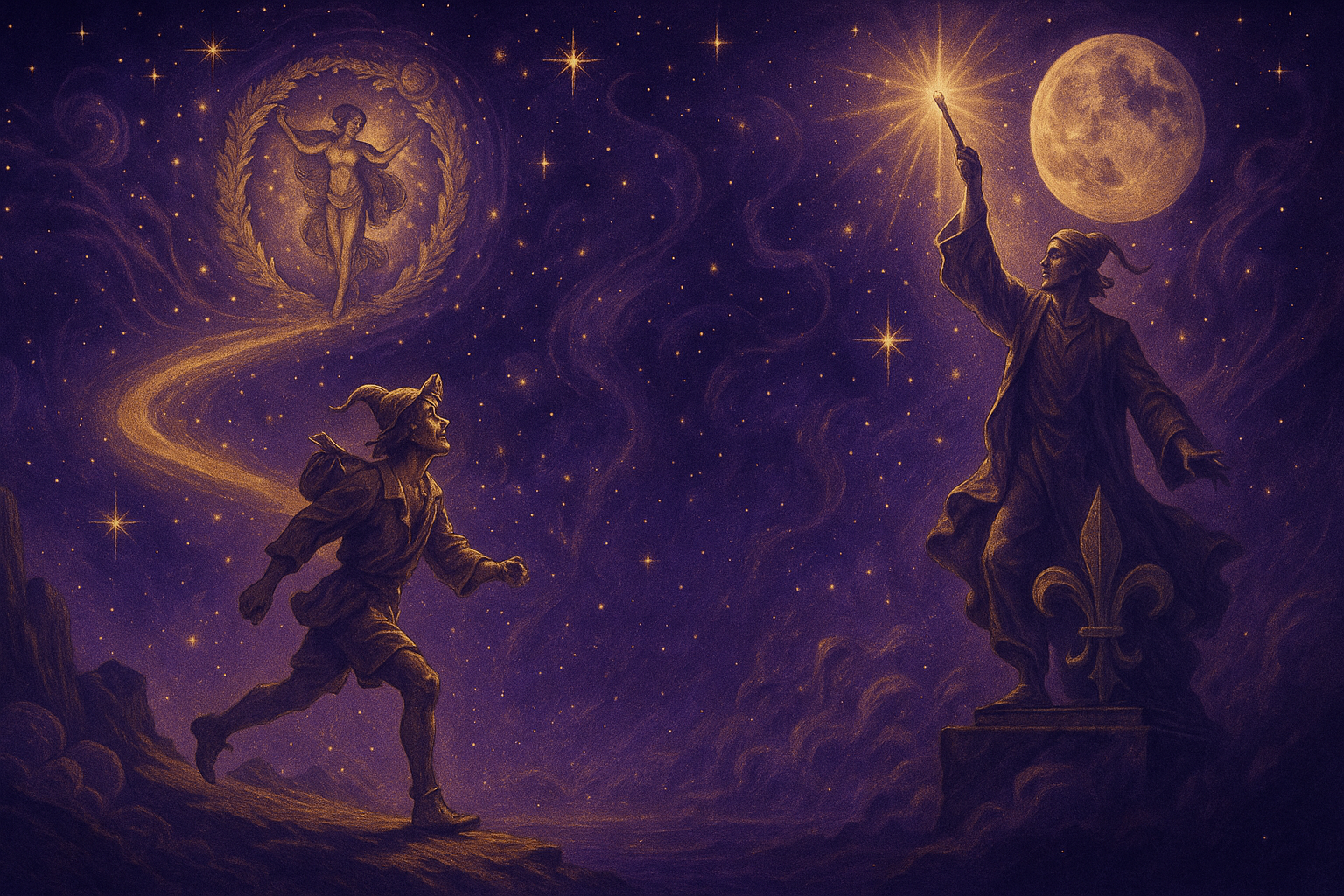
What is the Fool’s Journey?
The Fool’s Journey is the story told by the 22 Major Arcana cards when laid out in sequence—from 0 (The Fool) to 21 (The World). It maps the soul’s evolution through trials, lessons, ego deaths, spiritual tests, and rebirths.
This journey is cyclical. Every ending (World) becomes a new beginning (Fool). It mirrors:
The path of spiritual awakening
Jung’s archetypal shadow integration
The Tree of Life in Kabbalah
The seven stages of alchemical transformation
Tarot doesn’t just tell your future—it reflects your initiation.
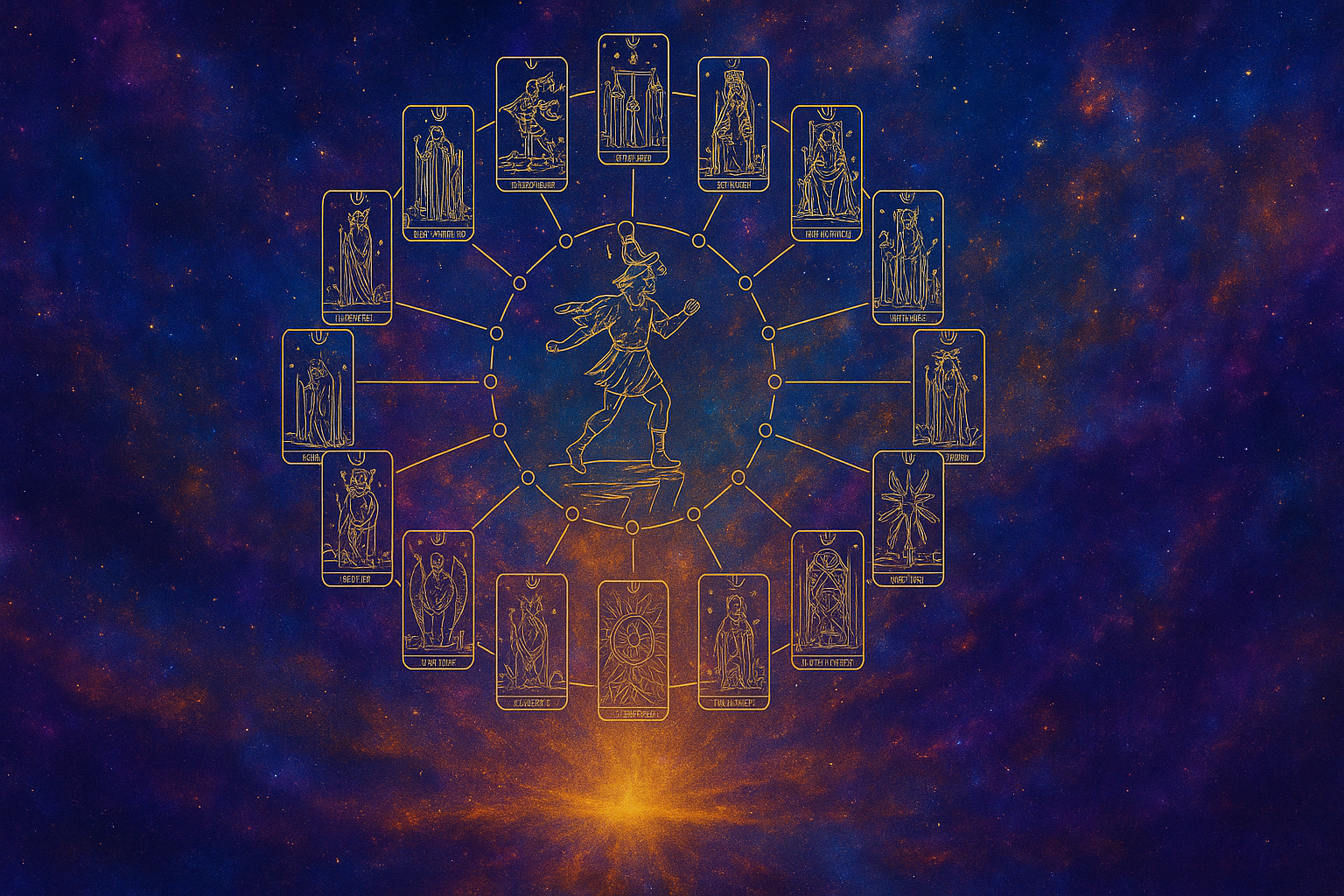
What does each stage of the Fool’s Journey represent?
Act I: The Outer World (Cards 0–7)
The ego forms. Lessons are external—family, society, ambition, power.
The Fool (0):
The soul incarnates. Pure potential. Trust. Naïveté.
The Magician (1):
Awareness of will. Creation begins.
The High Priestess (2):
Inner wisdom awakens. Secrets stir.
The Empress (3):
Connection to the divine feminine, nature, abundance.
The Emperor (4):
The sacred masculine. Structure. Law. Order.
The Hierophant (5):
Spiritual authority. Indoctrination or initiation.
The Lovers (6):
Choice. Duality. Union. The illusion of separation.
The Chariot (7):
Ego triumph. Willpower. The first taste of control.
🔑 Esoteric insight: This is the formation of identity. The seeker thinks the journey is about the outer world—but that’s just the prologue.
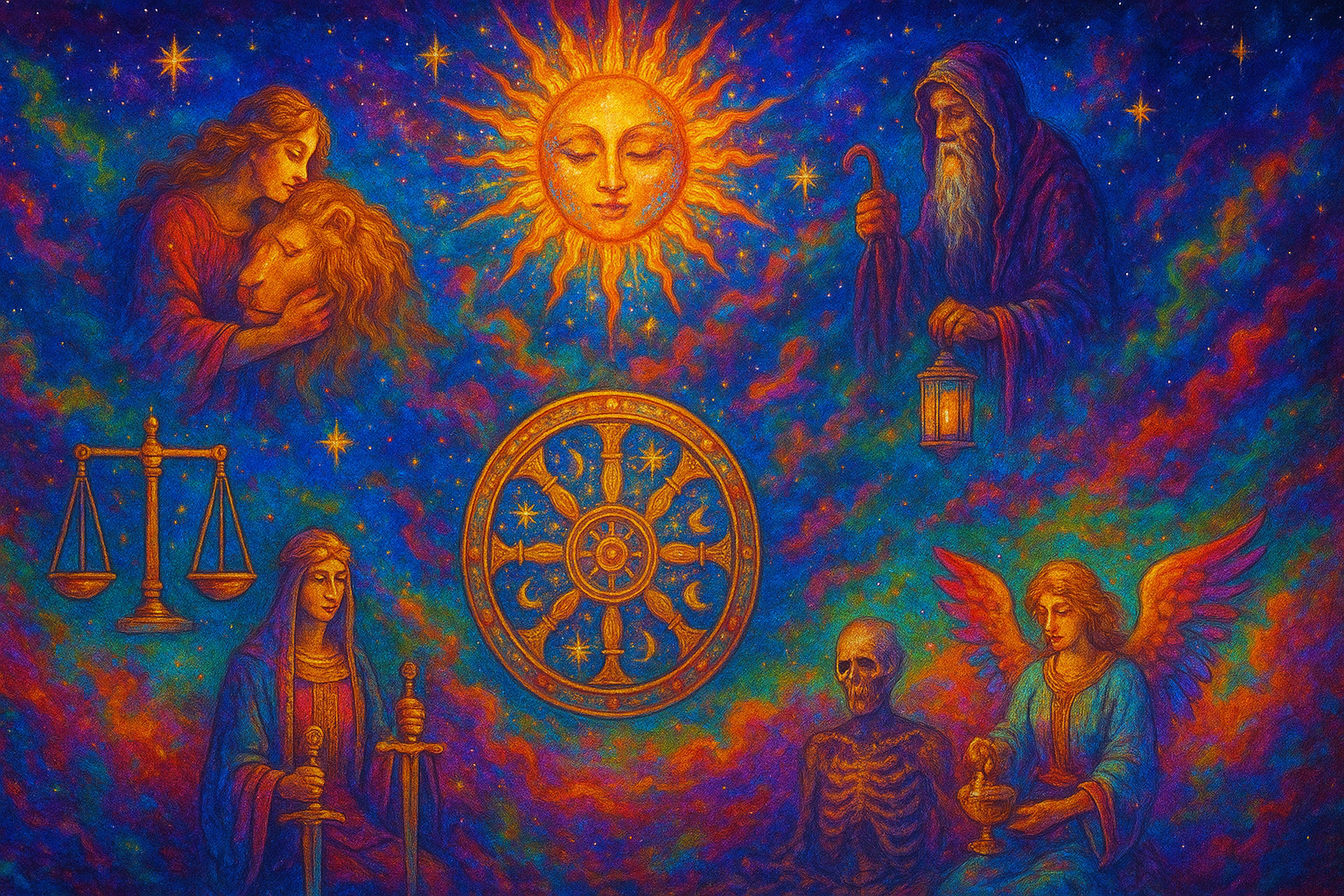
Act II: The Inner World (Cards 8–14)
The soul is tested. Inner turmoil, shadow work, ego death.
Strength (8):
Soft power. Inner mastery.
The Hermit (9):
Withdrawal. Introspection. Divine solitude.
Wheel of Fortune (10):
Fate’s wheel spins. Surrender to cycles.
Justice (11):
Karma. Cause and effect. Self-inquiry.
The Hanged Man (12):
Surrender. Inversion. Ego collapse.
Death (13):
Rebirth. Transformation. The old self dies.
Temperance (14):
Alchemy. Integration of opposites.
🔑 Esoteric insight: This is the true initiation. The seeker confronts themselves—and must choose to evolve or retreat.
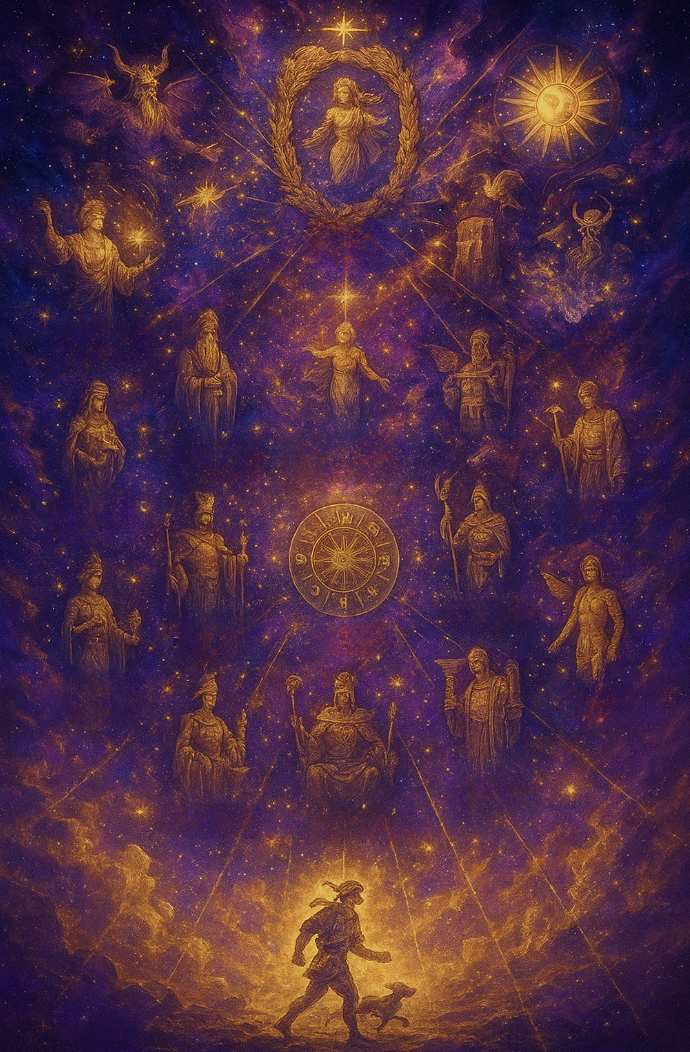
Act III: The Cosmic World (Cards 15–21)
The soul transcends ego. Awakening, temptation, divine union.
The Devil (15):
Illusion of control. Temptation. Material traps.
The Tower (16):
Destruction of false structures. Liberation.
The Star (17):
Hope. Renewal. Divine guidance returns.
The Moon (18):
Illusion. Fear. Psychic testing.
The Sun (19):
Truth. Joy. Clarity. Ego and soul align.
Judgement (20): Resurrection. Past lives. Life review.
The World (21):
Completion. Wholeness. Divine integration.
🔑 Esoteric insight: The soul awakens to its divinity. But enlightenment isn’t the end—it’s the reset. The Fool returns again, wiser.
<h3><strong>Why does the Fool’s Journey matter spiritually?</strong></h3><ol start="1"><li><p></p></li></ol><p>Because it’s not just <em>a</em> story—it’s <em>your</em> story. These archetypes aren’t theoretical—they play out in every initiation, heartbreak, career shift, spiritual crisis, and moment of clarity.</p><p>Each time you:</p><ol start="1"><li><p></p></li></ol><ul><li><p>Leave a relationship, you’re in <strong>Death<br><br></strong></p></li><li><p>Start therapy, you’re in <strong>The Hermit<br><br></strong></p></li><li><p>Have a spiritual awakening, you’re in <strong>Judgement<br><br></strong></p></li><li><p>Rebuild after chaos, you’re in <strong>The Star<br><br></strong></p></li></ul><p>Tarot becomes a mirror—not of what will happen, but of where your soul is right now.</p>
<h3><strong>How to work with the Fool’s Journey in your own practice</strong></h3><ol start="1"><li><p></p></li></ol><ul><li><p><strong>Journal through the Majors:</strong> Pull one card a week. Reflect on where it lives in your life.<br><br></p></li><li><p><strong>Use spreads based on the journey:</strong> E.g., “Where am I on the Fool’s path?”<br><br></p></li><li><p><strong>Link to moon cycles:</strong> The New Moon is The Fool. Full Moon is The World.<br><br></p></li><li><p><strong>Create rituals per card:</strong> Candle for The Hermit, rose water for The Empress, tower-burning for The Tower.<br><br></p></li></ul><p>This turns tarot into a <strong>living ritual</strong>, not just a reading tool.</p>
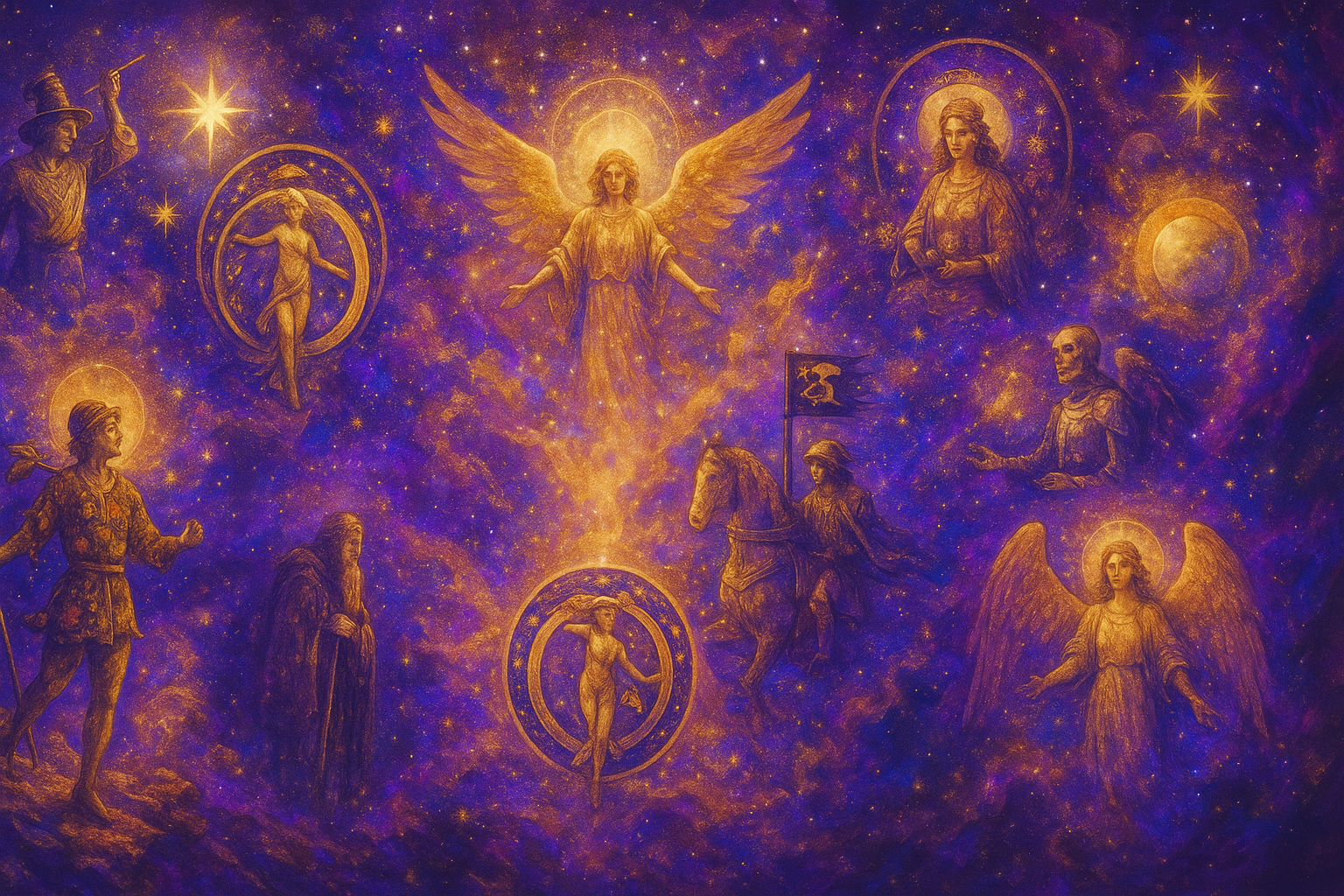
<h3><strong>What is the Fool’s Journey as a map of spiritual awakening?</strong></h3><ol start="1"><li><p></p></li></ol><p>The Fool’s Journey is a symbolic progression through the 22 Major Arcana that mirrors the soul’s awakening. Each card represents a stage of transformation—from the innocence of The Fool, through trials and ego deaths, to enlightenment with The World. It’s a timeless framework for spiritual growth, inner alchemy, and divine remembrance.</p>
<h3><strong>FAQs</strong></h3><ol start="1"><li><p></p></li></ol><p>Is the Fool’s Journey linear or cyclical?<br> → It’s both. You move forward through it, but always return to earlier cards at new levels of understanding.</p><p>Do I have to believe in esotericism to benefit from it?<br> → No. Even skeptics can use the Fool’s Journey as a psychological or archetypal growth map.</p><p>What’s the best way to start learning it?<br> → Begin by journaling your life experiences through the lens of the Major Arcana. You’ll see the pattern immediately.</p>
<h3><strong>Conclusion</strong></h3><ol start="1"><li><p></p></li></ol><p>Tarot isn’t about fortune-telling—it’s a sacred mirror of the soul. The Fool’s Journey invites you to see your life as myth, your struggles as rites, and your victories as initiations. When you walk this path consciously, you stop asking “what’s next?” and start asking <strong>“what is this moment awakening in me?”</strong></p><p><strong>Where are you in the Fool’s Journey right now—and what part of yourself are you being asked to evolve?<br></strong> If this spoke to you, share it with a fellow seeker and check out more tarot wisdom at <em>Celestial Connection.</em></p>